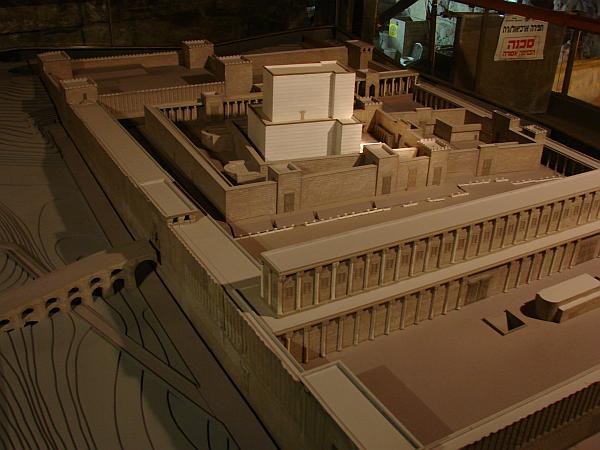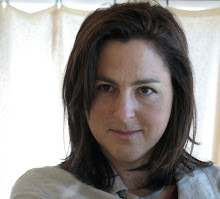We explored the Old City of Jerusalem with a guide (Helen Cohn - I recommend her highly. I'm putting her contact info at the bottom of this email, in case you want to use a private guide. She is licensed for the whole country. She's originally English, but has lived here 25 years, and raised 3 kids here.)
It was an incredible day, full of stories (I will repeat a few of them, and hope not to get some facts wrong). The main theme that struck me is how long memories are here. We heard over and over stories where the back and forth of interested parties took place over periods of time in excess of a 100 years. It gives an insight into the mentality here - people take a much longer view of history than we Americans do.
Even though the Old City is only a square kilometer, we walked all day, exploring nooks and crannies.
We met at the Jaffa Gate and went up to walk on the ramparts for a while.
 |
This beautiful horse was getting washed down at the police station inside the Old City.
The roads are so narrow, sometimes horse is the most efficient mode of transport for the police.
 |
| walking along the ramparts |
The current walls of the Old City were built in the 1500s by the Turks.
When the Jordanians held the Old City, this wall was a front line. The Jordanian soldiers would fire out at people unpredictably.
A little further down, the wall looks out over the little town that Moses Montefiore built in the mid-1800s, with the famous windmill to grind flour. He saw that the Jews in Jerusalem lived in cramped and unhealthy conditions. So he built the first community outside the walls, where they could have little plots of land, and clean air. But people were afraid to live outside the city, so no one wanted to move there. He had to pay them to come out. But then another wave of disease hit the City, and the people outside the walls were spared. So then people realized then moving outside the City was a good idea.
Our guide for the day was Helen Cohn - I recommend her highly!
Helen is the one on the far left, with the white hat.
The ramparts walk has many short flights of stairs - they are steep and uneven, but there are railings.
The first "quarter" we passed is the Armenian quarter.
Helen told us a story she learned from an Armenian friend: An Englishman in Jerusalem ordered an Armenian tea set and paid in advance. Then the Armenian genocide and WWI took place. He figured his money was long gone.
But then the tea set maker contacted him and said Your tea set is ready to be delivered to you.
Apparently this impressed upon the British the idea that the Armenians are people with whom you could do business, which led to some good treatment of them in Jerusalem.
Kaiser Wilhem came to Jerusalem to see the placement of the founding stone of this Lutheran church just outside the Old City Walls.
The Armenians didn't like that the Lutheran church was taller than their church, so they began building a new church, intended to be taller still.
But they ran out of money (and some leaders absconded with money) and the church is covered with scaffolding.
We came down off the walls at the Zion Gate. We could see bullet holes in the wall from battles in 1967.
We spent a lot of time in the Jewish quarter, but didn't take many pictures.
We had a snack there - crepes, bagels, ice cream.
See the white dome - that's a synagogue.
It was built and destroyed many times.
At one point, the Ashkenezi Jewish community borrowed money from the Arabs to build a new synagogue, but then they couldn't repay the debt. After 20 years, the lenders came and destroyed the place. For a 100 years after that, Ashkenazi Jews couldn't walk around in Jerusalem dressed in their Hasidic garb, or they would be attacked. Finally, the Jews of Tzfat raised the money and paid the debt, so they could go to Jerusalem without wearing a disguise.
At some point, when there was a Sephardi synagogue on this site, one of the members decided to convert to Islam. His mother owned the land of the courtyard of the synagogue. She gave it to her son to build his new mosque, which is why there is a minaret right next to the synagogue.
The jacaranda trees (with the purple flowers) are spectacular all over Jerusalem.
Cris in front of the Wall
The security line to go up that ramp was especially long and slow, with security very strict that day. They considered taking away one of Helen's history books.
She no longer brings a bible on her tour, since it can be confiscated at this checkpoint. They don't want anyone trying to start a Jewish prayer service up there; that would start a riot.
Observant Jews don't go to the Temple Mount, for fear of stepping too close to the Holy of Holies, which is up there somewhere. But we went up for a look.
The Dome of the Rock is incredibly beautiful - graceful, with a beautiful color palette. It is a shrine, not a mosque.
When Ted and I were here in 1994, we were allowed to go inside, but today, only Muslims are allowed in.
We ate lunch in the Muslim Quarter -- it was a felafel place at the corner of Via Dolorosa and El Wad (at least, I think so -- definitely at the end of the Via Dolorosa).
Then we headed over to the Church of the Holy Sepulchre. Just before we went in there, we went into a tiny Coptic Christian church, where you can go down the steep and slippery steps to their cistern. The acoustics are wonderful in there. I got Sam to sing a bit of Hallelujah -- the sound was incredible, heavenly, transporting. Sam played with the acoustics as he sang, and it was sometimes hard to tell what was Sam, and was the echo.
The tour of the Church of the Holy Sepulchre lasted about an hour and a half. That place is a crazy warren of chapels, and some of the most memorable stories of the day took place there.
For example, the Copts years ago (centuries) grudgingly gave permission to the Ethiopians to use the roof of part of the church. The Ethiopians built a little hut-like area that became a tiny village. When the old Ethiopian monk lay dying, the Copts came and took the key from his pocket, and locked up the place so the Ethiopians couldn't get in there anymore. And so things stood for a hundred years.
Then one night the Copts all went out to a party, and the Ethiopians climbed over the wall, changed the locks and re-occupied their former turf.
We climbed down some steps in the Church from there-- the first room was an Ethiopian chapel. We went down into the second room. Helen said this one was Coptic. An elderly Ethiopian monk was sitting in the corner, apparently dozing. But when he heard that, he jumped up and corrected her -- this chapel too was Ethiopian!
We descended further in the Church.
There was a line of people waiting to go through a tiny room that is Christ's tomb. There were nuns at the front of the line, and Sam, who was not in the line.
If you don't want to wait on the line, you can go to the back of the tomb, to an area that is probably about 8 feet by 3 feet, where there is the only bit of Coptic chapel inside the Church. Here you can kneel down and put your hand through a hole in the wall of the back of the tomb, and touch the tomb .
Here we are in the Armenian section of Church of Holy Sepulcher.The floor has a mosaic commemorating the Turkish massacre of the Armenians.
Notice we all have shoulders and knees covered. Sometime Sam had to really slouch his shorts down to pass modesty muster.
We walked back to our hotel through the new Mamila mall, which is a sparkling, elegant long string of shops and cafes right across from the Jaffa Gate.
Later that night, we went on the tour of the Tunnels next to the Western Wall, which I highly recommend.
You probably already know that the Western Wall is not, in fact, the wall of the Temple. It is just a tiny part of the retaining wall Herod built when he decided to enlarge the flat area on top of Mount Moriah, so he could built a huge Temple and plaza.
The Western Wall we know today is sacred because it is the closest place to the Holy of Holies, the foundation stone upon which the world was built, where the presence of God lingers. They have a cool model inside the dig, that shows the development of plateau and the Temple.
Now The Wall is not even the closest place -- now one can get much closer by going into the tunnels. And indeed, we saw people praying inside, at that spot.
I found that picture of the model on someone else's travel blog. They have a great post all about the Wall and Temple.
http://www.linearconcepts.com/travelog/2007-israel/23-rabbinical-tunnels
The Western Wall we know today is sacred because it is the closest place to the Holy of Holies, the foundation stone upon which the world was built, where the presence of God lingers. They have a cool model inside the dig, that shows the development of plateau and the Temple.
Now The Wall is not even the closest place -- now one can get much closer by going into the tunnels. And indeed, we saw people praying inside, at that spot.
I found that picture of the model on someone else's travel blog. They have a great post all about the Wall and Temple.
http://www.linearconcepts.com/travelog/2007-israel/23-rabbinical-tunnels
It was a fascinating day. But after so much walking on the hard stones of Jerusalem, everyone was tired, with some achy feet and knees.
Here is Helen's contact info:
Website: www.israeldaysout.com
Phone: 054 308 1150 in Israel
+972 54 308 1150 from outside Israel
























0 comments:
Post a Comment